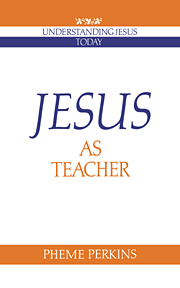2 - Jesus, Charismatic Teacher and Prophet
Published online by Cambridge University Press: 07 January 2010
Summary
Established “schools” had a process by which persons became teachers. They would have to spend years as students or disciples of a famous teacher. An outstanding student would then succeed the master. Others might eventually form their own group. We have already seen that Jesus did not come out of such a school. He had not studied the Law with a famous scribe or been part of a group devoted to interpreting the Scriptures like the Pharisees or Essenes. This fact about Jesus lies behind the question preserved in John 7:15: “How does he know letters, since he has not been taught?” This comment does not imply that Jesus was illiterate. He would have been taught to read the Torah scrolls as well as the other forms of reading and writing common in elementary education. But it suggests that Jesus had not been taught how to interpret the Scriptures according to the principles of some school.
Jesus' reply was that he has been taught by God, the one who sent him. Anyone really concerned with doing God's will should recognize the source of his teaching and follow him (Jn 7:16–17). Another scene in John shows that early followers of Jesus also had to face the accusation from Jewish teachers that they were ignorant and could not presume to tell others the truth about God's will. This conflict is “acted out” in a story in which a blind man defends Jesus before hostile Jewish teachers. He is eventually thrown out of the synagogue for believing that Jesus is “from God” (Jn 9:13–34).
- Type
- Chapter
- Information
- Jesus as Teacher , pp. 23 - 37Publisher: Cambridge University PressPrint publication year: 1990



